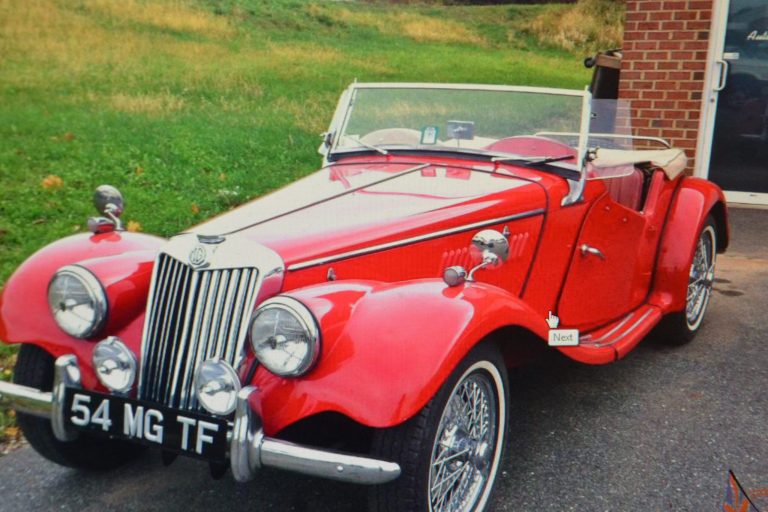
The first time I laid eyes on her I knew she had to be mine. I was a freshman in college and it was love at first sight. There was a slight problem, however. This beauty seemed to be the property of Kurt Dorfi, who was a 6-foot-7 basketball player, big man on campus and who did not seem in a hurry to let go of her.
But I was young and bold and not to be deterred. I walked up to Kurt one fine spring day and asked him if she could be mine. He smiled and said: “Sure, but it will cost you $600.” Let me be clear. The beauty in question was not a foxy young cheerleader but a red 1954 MGTF. That was the car you may have seen in the film “Two for the Road” with Audrey Hepburn and Albert Finney. An MGTF, the south of France, Hepburn and Finney, that’s a combination you can’t beat. I wanted that car.
So I pleaded with Kurt to hold the car until summer’s end when I would have earned enough money to purchase her. And I did just that. Over the summer, I got a job unloading trucks for UPS and caddying on weekends and by September the car was mine.
I am certainly not alone in my love of cars. One of my patients drives NASCAR for fun on weekends, another is seeking employment with Ferrari, still another has a collection of Porsches and I once had a patient who drove stock cars. In fact, now that I think of it, one of my sixth-grade friends was a kid named Drew Agnone, who raced those quarter midgets.
Yes indeed, the world loves cars. They are one of the definitive social status markers. If you dream of cars. they often will symbolize your self-esteem or how fast you are going in psychotherapy.
Many great films have featured cars. Films like “Driver” with Ryan Gosling, who played a stunt driver and eventually used his car as a weapon of revenge. “Baby Driver” starring Ansel Elgort, Jaimie Foxx and Jon Hamm showed the guts it takes to be a getaway driver. And the recent gem “Ford v Ferrari” starring Matt Damon and Christian Bale as a driver who had no fear. These films display the beauty, speed, power and danger of the automobile.
But the definitive artistic take on cars comes from the New Journalism writer Tom Wolfe, the man who loved white suits. Wolfe wrote two long-form essays on cars. The first was entitled “The Kandy-Kolored Tangerine-Flake Streamline Baby,” a 32-page essay on the beginning of the customized car movement in America in the 1950s. These babies had big, powerful, hopped-up chrome-plated motors and thighs like tailfins, bubble tops, concealed headlights and low-slung bodies, all of which Detroit stole and made their own.
The way Wolfe cracks the code of a subject he studies is to immerse himself in it. Gay Talese did this, Truman Capote did this and so did Joan Didion. Immersion journalism means that the author hangs with his subject for weeks on end and gets to know all the nuances of the subject. And the nuances Tom Wolfe uncovered was that teenagers must be teenagers and therefore are impelled to rebel against older folks.
I still see this tendency in today’s youth as an explanation why some kids insist on souping up their cars to make outrageous varoom-varoom sounds as they race down the road. It’s good that I’ve found an explanation for this noise so that I don’t get overly aggravated.
The other long-form essay he wrote on cars was the 44-page essay called “The Last American Hero” about the emergence of stock car racing from the Deep South, which also has coon hunting, moonshine whisky, chewing tobacco and red clay. Tom Wolfe gets to know Junior Johnson, who was one of the famous good old boys from Appalachia who learned to drive by running whisky during Prohibition days. The nerve and the skill it took to outrun federal agents prepared him to dominate stock car racing, which became the big sport in the South.
Wolfe has written “The Right Stuff” about the life of fighter pilots, “A Man in Full” about Atlanta, Ga., society, “Back to Blood” about Miami Beach cops and “I am Charlotte Simmons” about a Duke University college basketball player. And when you read his novels or his long-form essays, you get an uncanny detailed view of what he writes about. Kind of like a modern-day Proust.
Immersion journalism requires two things, talent and time, but this kind of enveloping writing is coming to an end. It’s 2022, a speedy time so there is no time to hang out with a subject for a few months. At least we have some essays and books from a time when the journalist had weeks and even months to immerse themselves in a story and uncover its depths.
So if you love cars, like almost everybody does, go read “The Kandy-Kolored Tangerine- Flake Streamline Baby” or “The Last American Hero,” two essays that were written in a slow time about speedy cars. In this age of TikTok and Twitter, no one will have the time or inclination to read all 17,908 words to get to know Junior Johnson, running whisky and going coon hunting with some good old boys on the Appalachian Trail.
And that’s too bad. I guess we have Kim Kardashian to thank for that. She is prettier than Junior Johnson and his stock car, but she can never make that varoom-varoom sound like he did.






